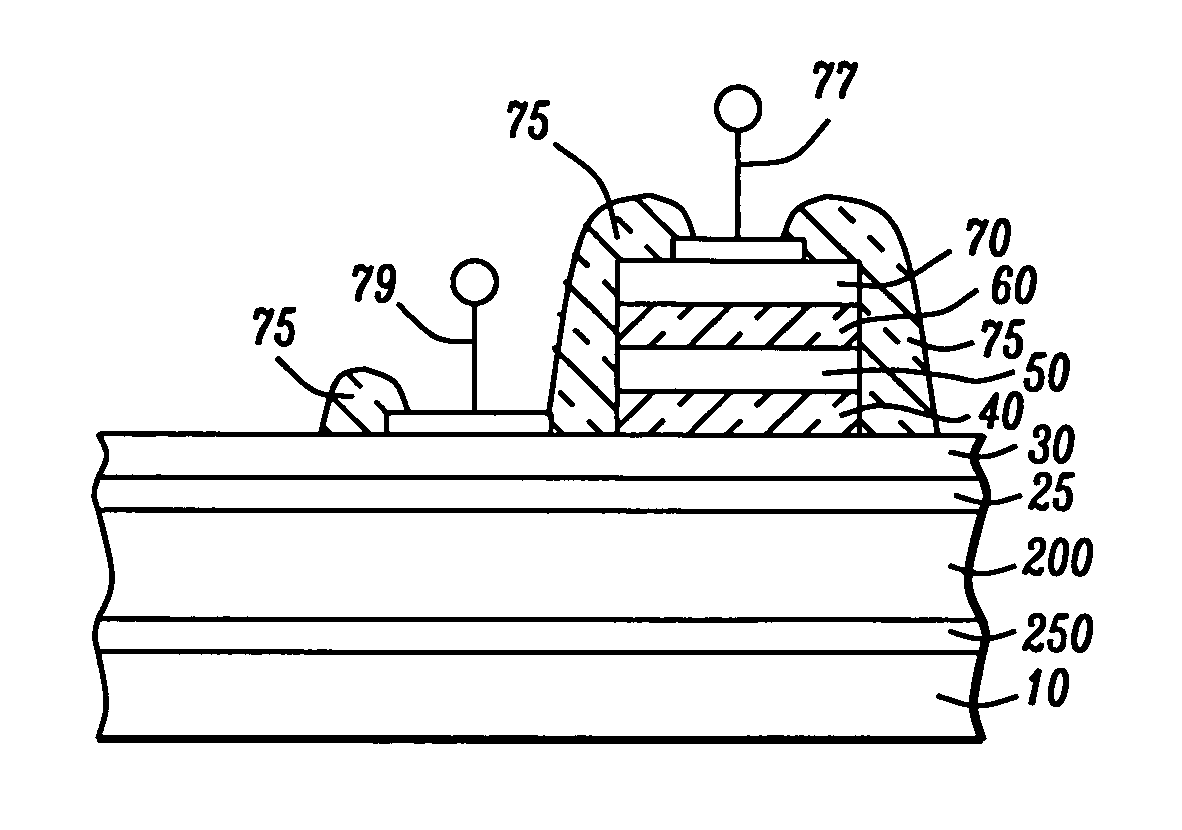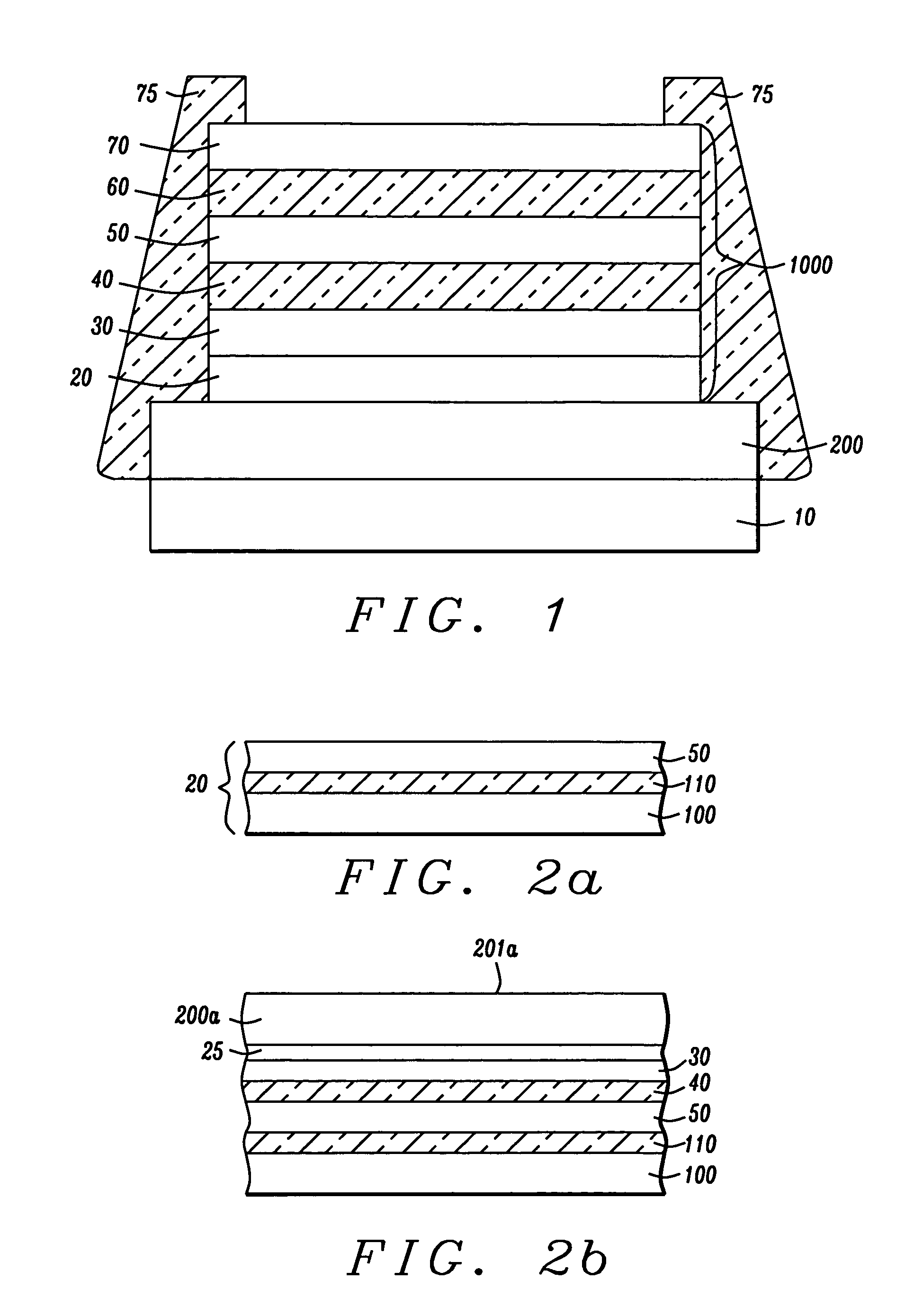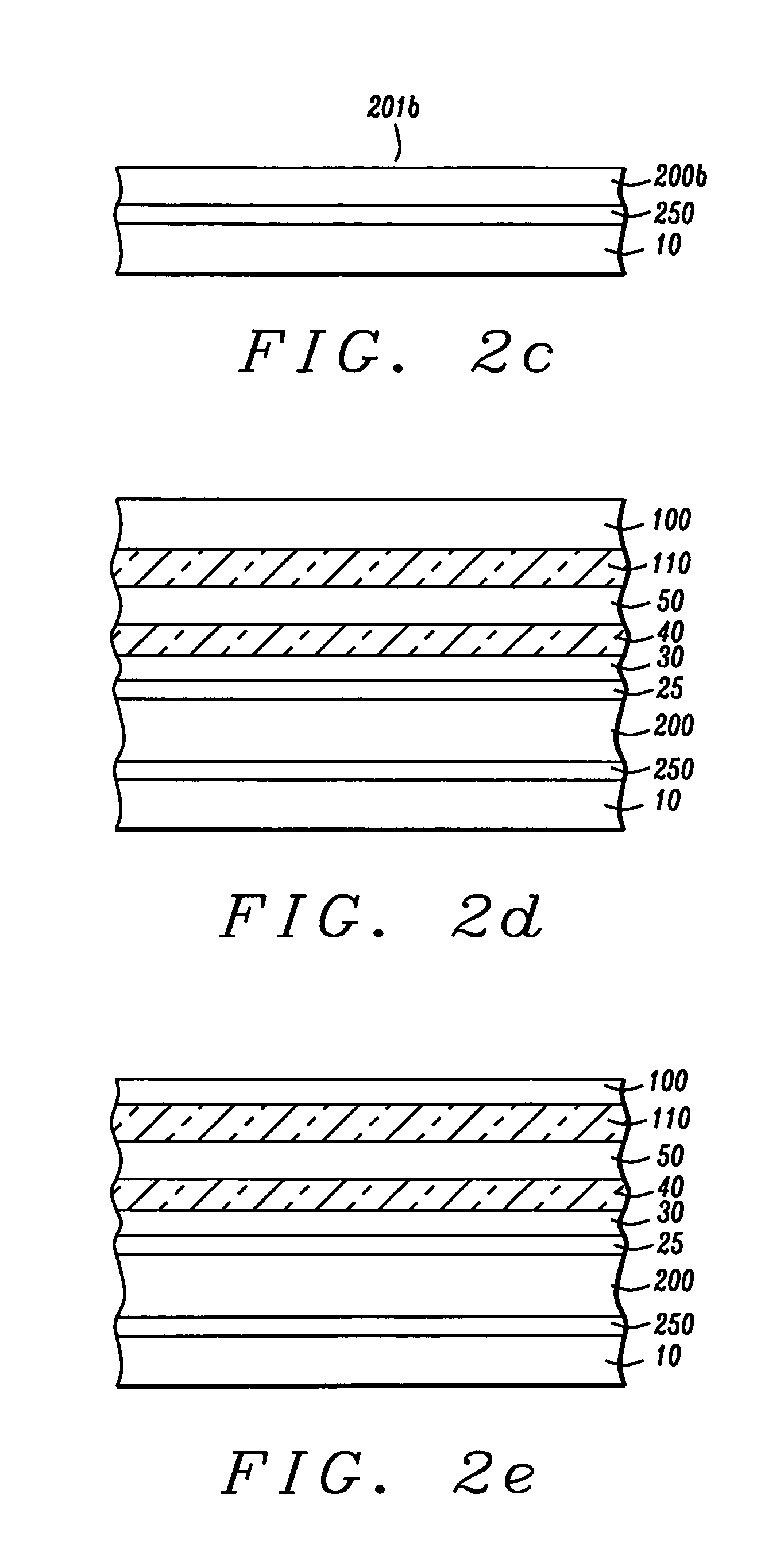Method of making resonant tunneling diodes and CMOS backend-process-compatible three dimensional (3-D) integration
a technology of resonant tunneling diodes and backend processes, applied in the field of solid-state electronics, can solve the problems of poor performance, difficult integration into mainstream sio2 /sub>complementary metal oxide semiconductor) ic technology, and inability to meet the requirements of process and integration, and achieve simple integration, enhance rtd performance, and maintain process and integration requirements. the effect of ease of fabrication
- Summary
- Abstract
- Description
- Claims
- Application Information
AI Technical Summary
Benefits of technology
Problems solved by technology
Method used
Image
Examples
first embodiment
[0034]Referring to FIG. 2a, there is shown an initial process step in a first embodiment that utilizes a semiconductor-on-insulator wafer as the substrate for the RTD fabrication. Within the method of the invention, the wafer can be a Si on insulator (SOI), a Ge on insulator (GOI) or a SiGe on insulator (SiGe—OI) wafer, depending on the nature of the quantum well that is desired. Within the present embodiment a SOi wafer is used as a substrate, but the choice should not be construed as a limitation on the generality of the invention.
[0035]As is well known in the art, the SOI substrate (20) is a tri-layer including a lower Si layer (100), on which is formed a layer of insulating material (110), typically SiO2, which is also called a buried oxide or “BOX” layer, on which is formed an upper layer (50) of monocrystalline silicon (the SOI layer). The upper layer, which will become the quantum well layer, has been reduced in thickness, by an etching process such as oxidation or chemical m...
second embodiment
[0046]the present invention is fabricated using a SOI wafer as in the previous embodiment and applying what is denoted the “smart-cut” technique (a cleavage technique known in the art) to laterally cleave its upper Si layer, then thin it further so that it can be used as a Si well.
[0047]Referring to FIG. 3a, there is shown the first step in this fabrication method in which an upper Si layer (50) of a SOI wafer (20) is implanted through an upper surface (55) with hydrogen to a depth that is less than 100 nm. The implant is represented as shaded region (57). It is noted that the implanted hydrogen, when combined with appropriate subsequent thermal processing of the wafer, produces a lateral cleavage of the upper Si layer (50) (hence the term, “smart-cut”) allowing the lower portion of the layer and the remainder of the SOI substrate beneath it to be removed. It is not the purpose of this invention to describe the smart-cut process, only to indicate that it is a known method of produci...
PUM
| Property | Measurement | Unit |
|---|---|---|
| thickness | aaaaa | aaaaa |
| thickness | aaaaa | aaaaa |
| thickness | aaaaa | aaaaa |
Abstract
Description
Claims
Application Information
 Login to View More
Login to View More - R&D
- Intellectual Property
- Life Sciences
- Materials
- Tech Scout
- Unparalleled Data Quality
- Higher Quality Content
- 60% Fewer Hallucinations
Browse by: Latest US Patents, China's latest patents, Technical Efficacy Thesaurus, Application Domain, Technology Topic, Popular Technical Reports.
© 2025 PatSnap. All rights reserved.Legal|Privacy policy|Modern Slavery Act Transparency Statement|Sitemap|About US| Contact US: help@patsnap.com



